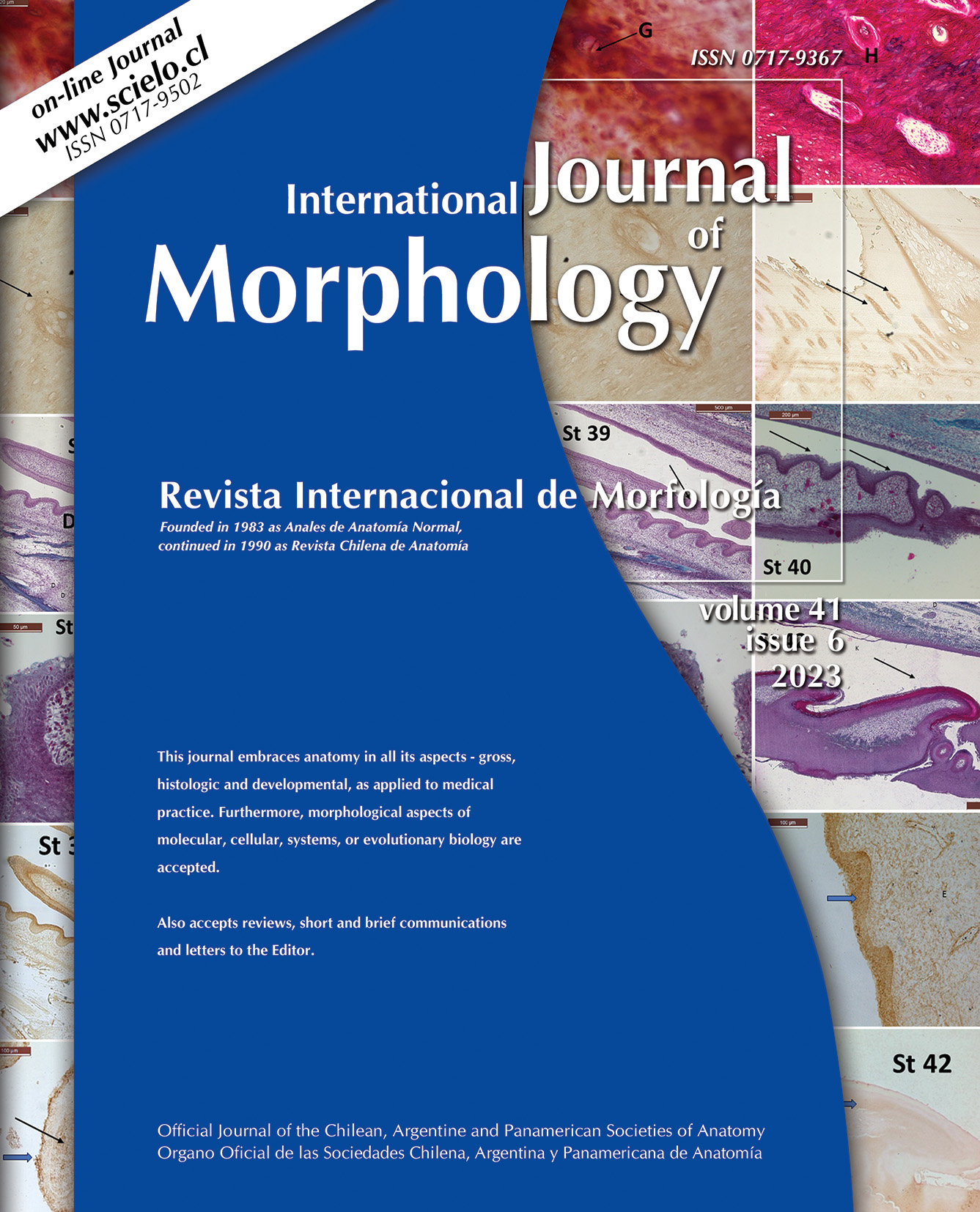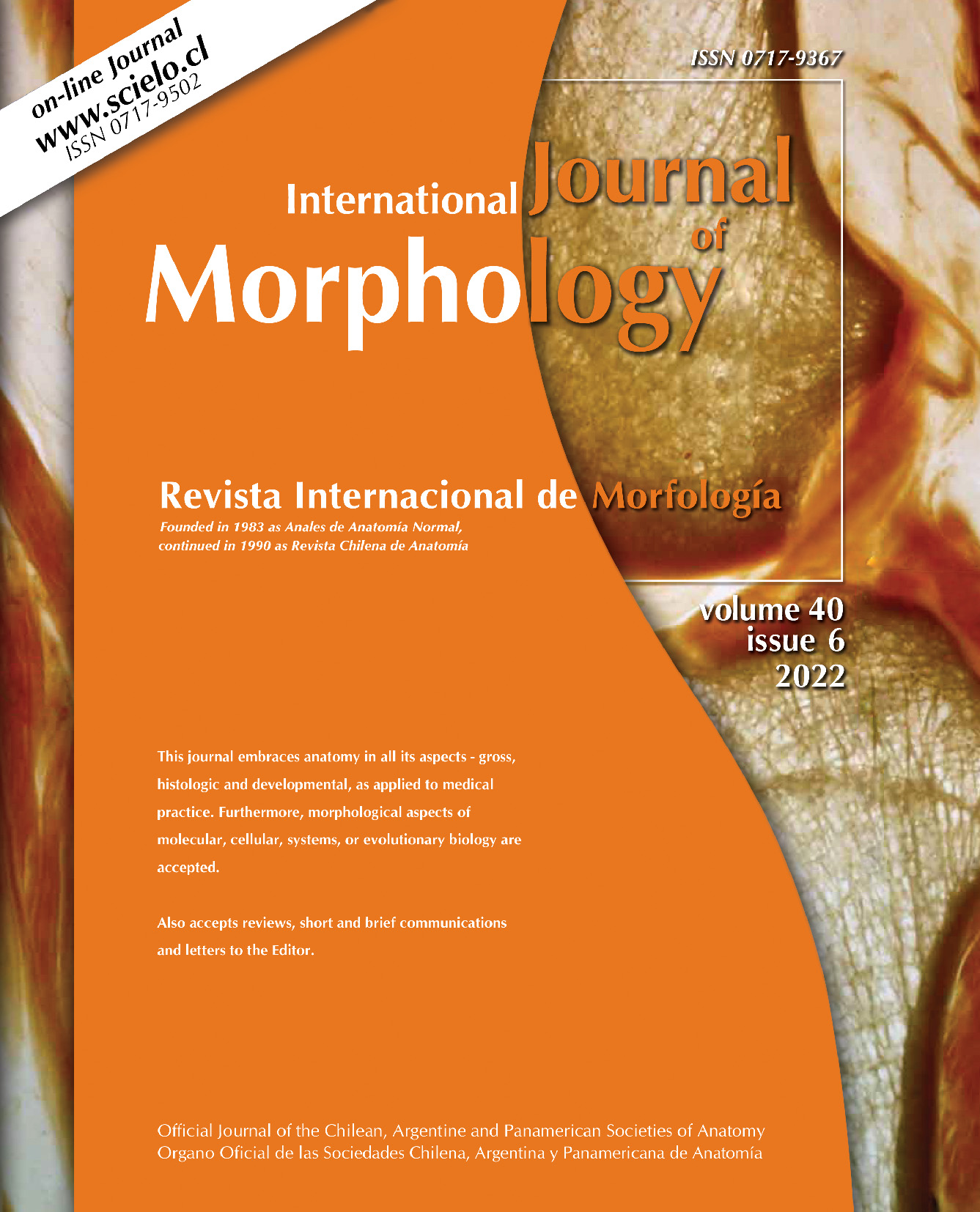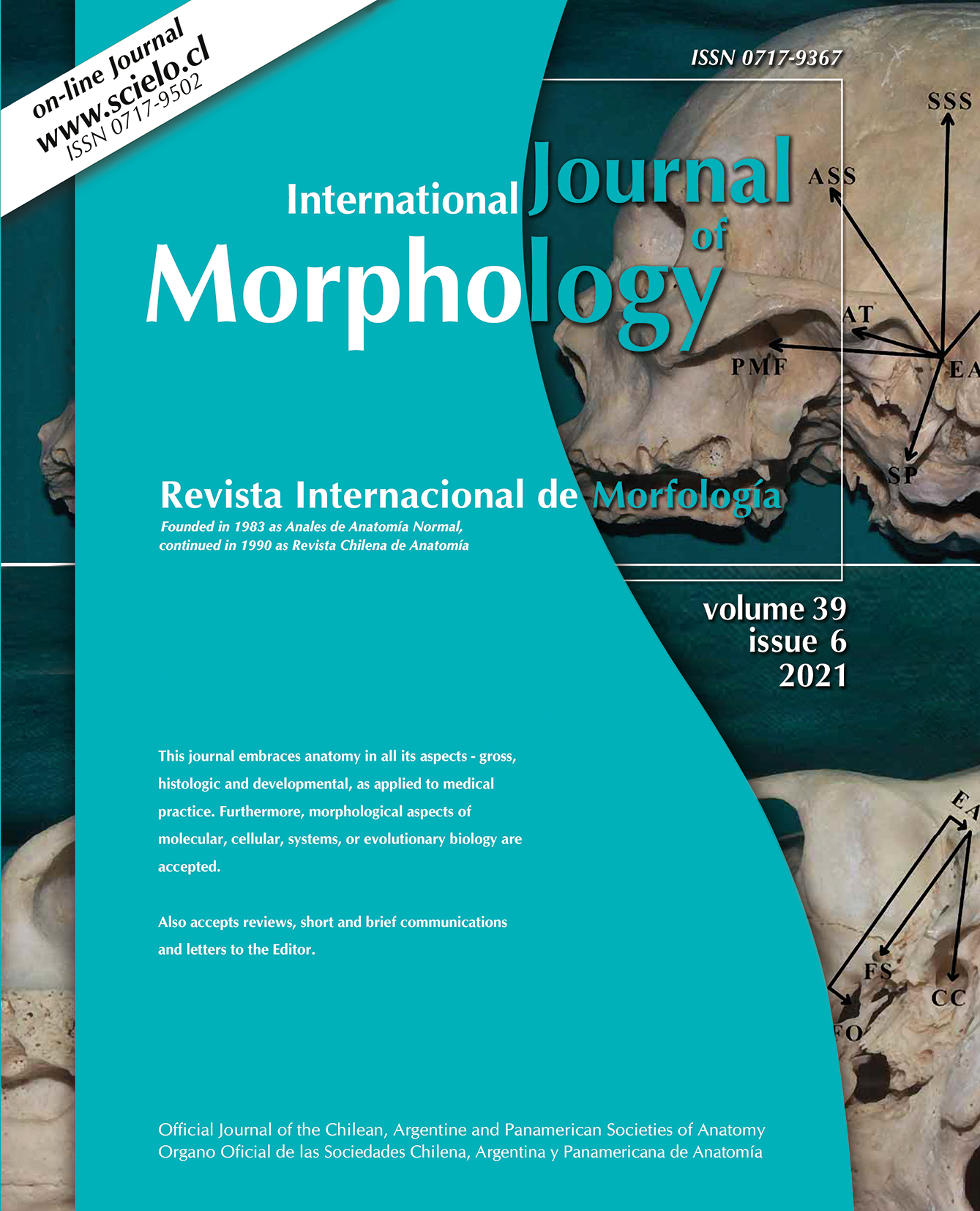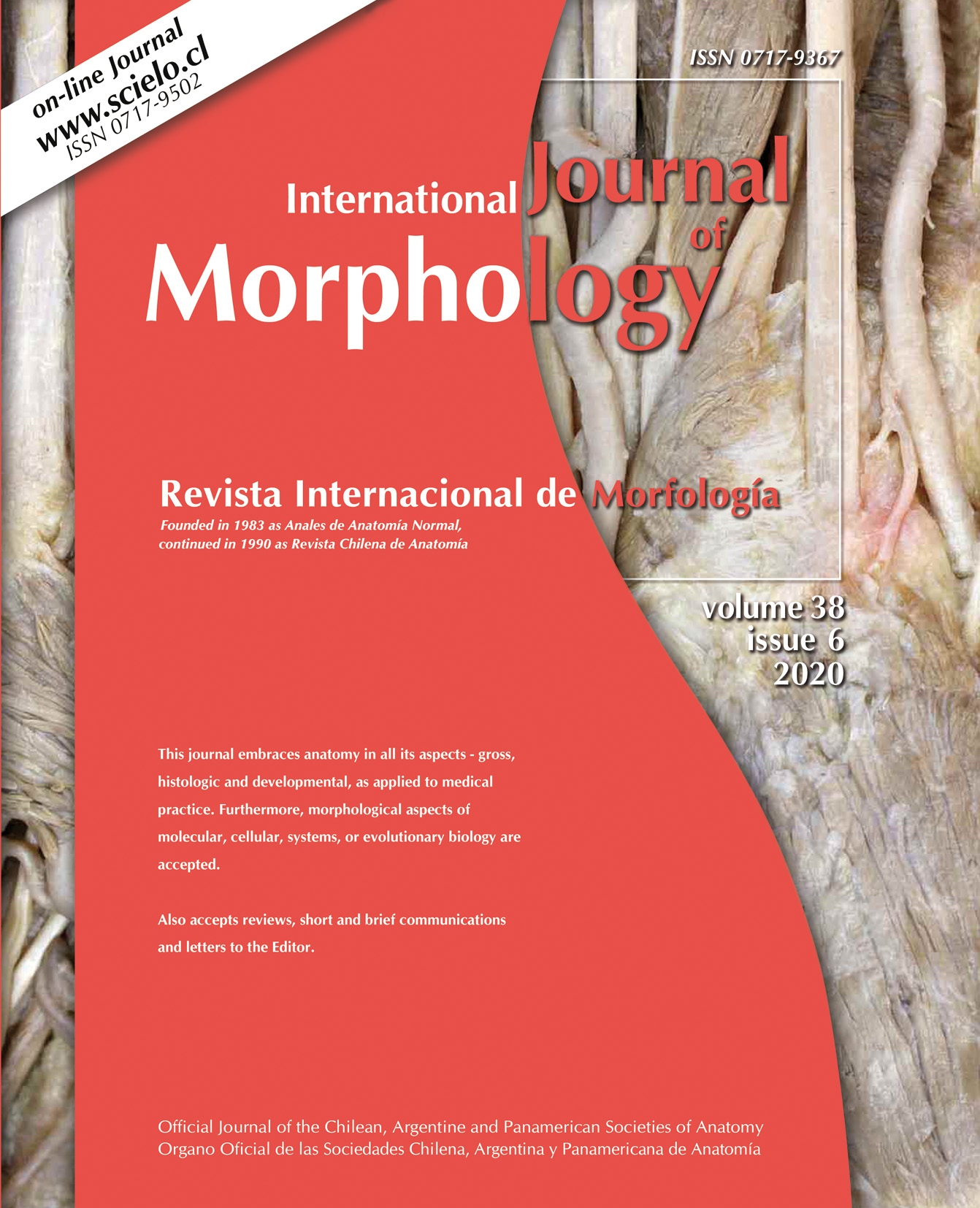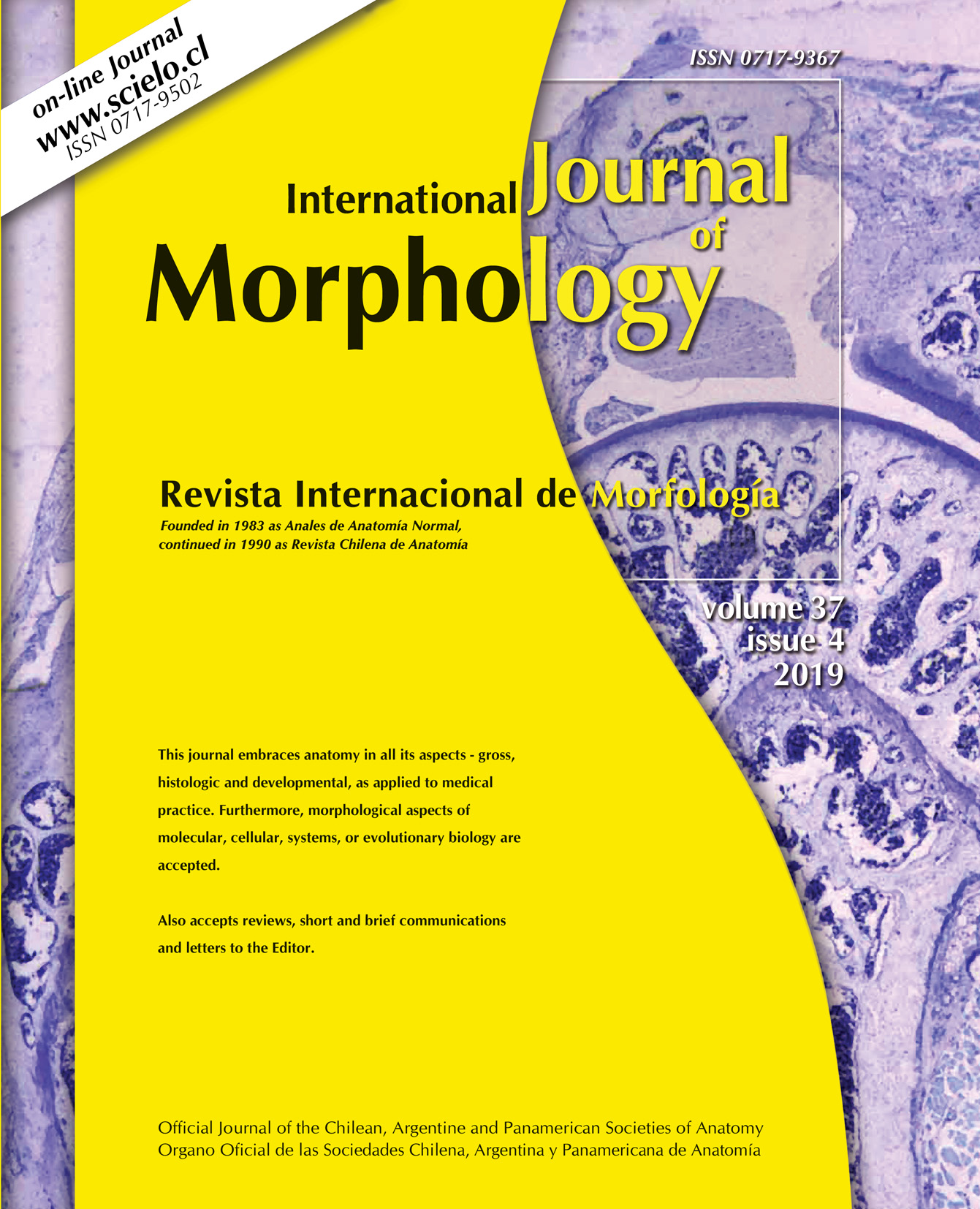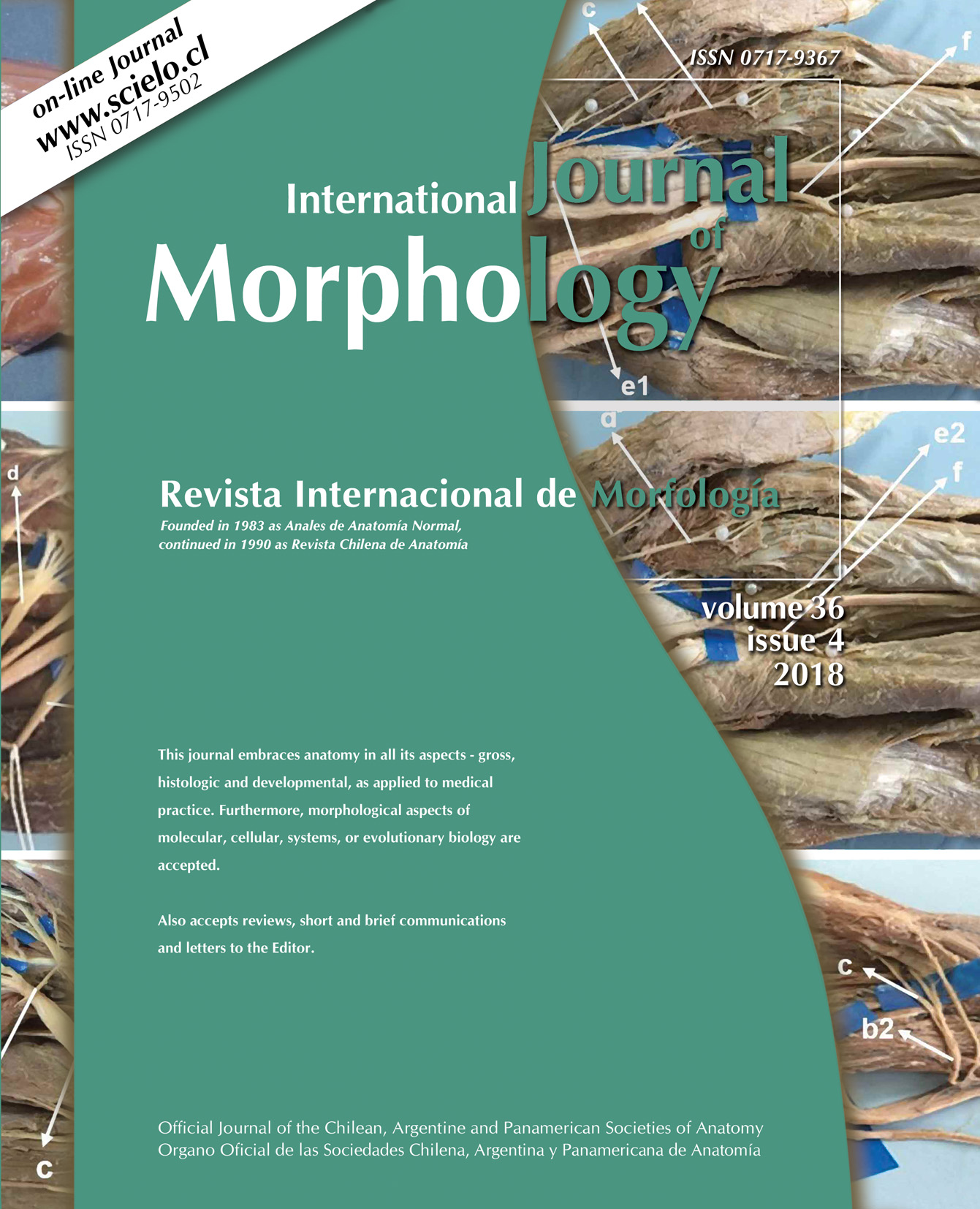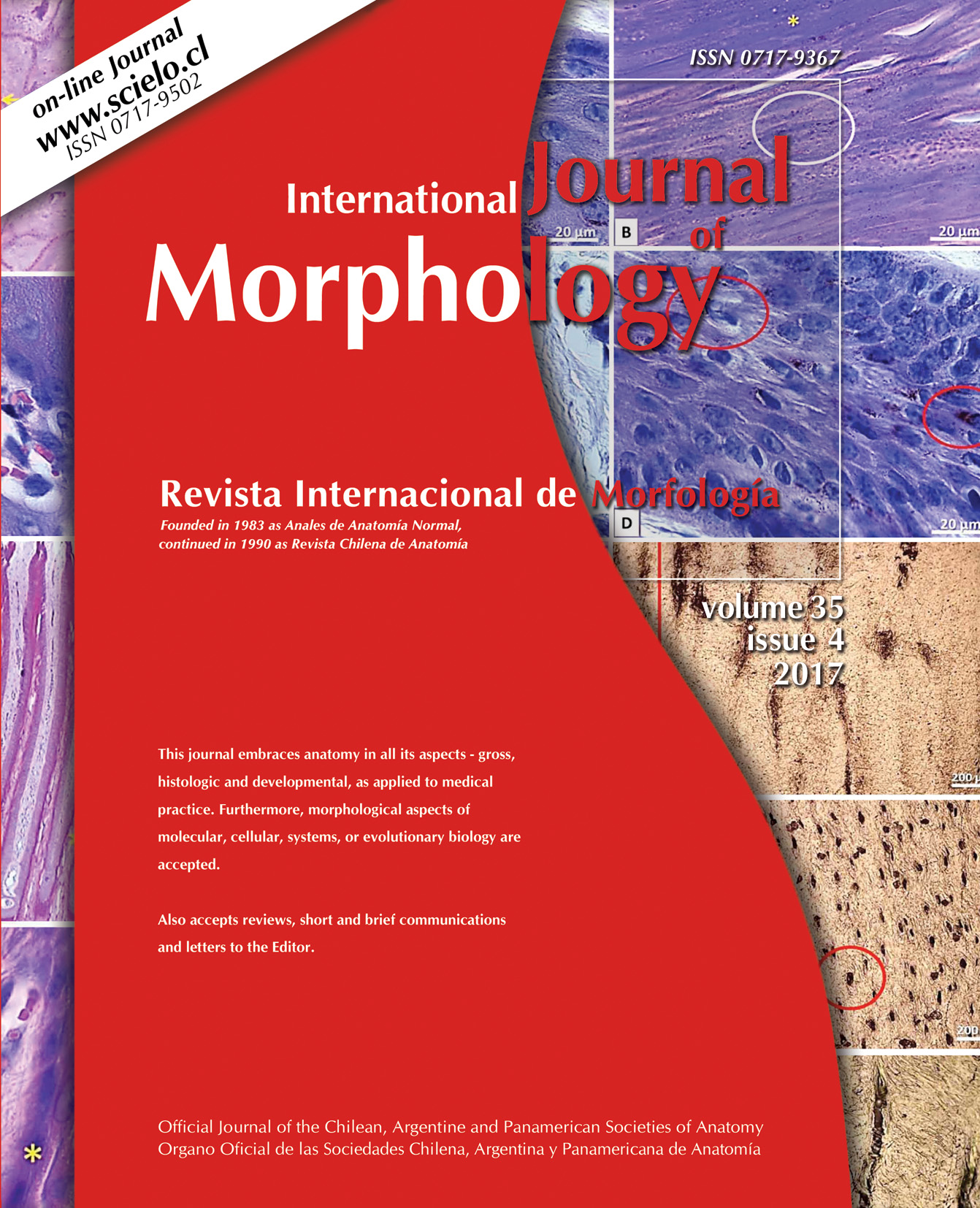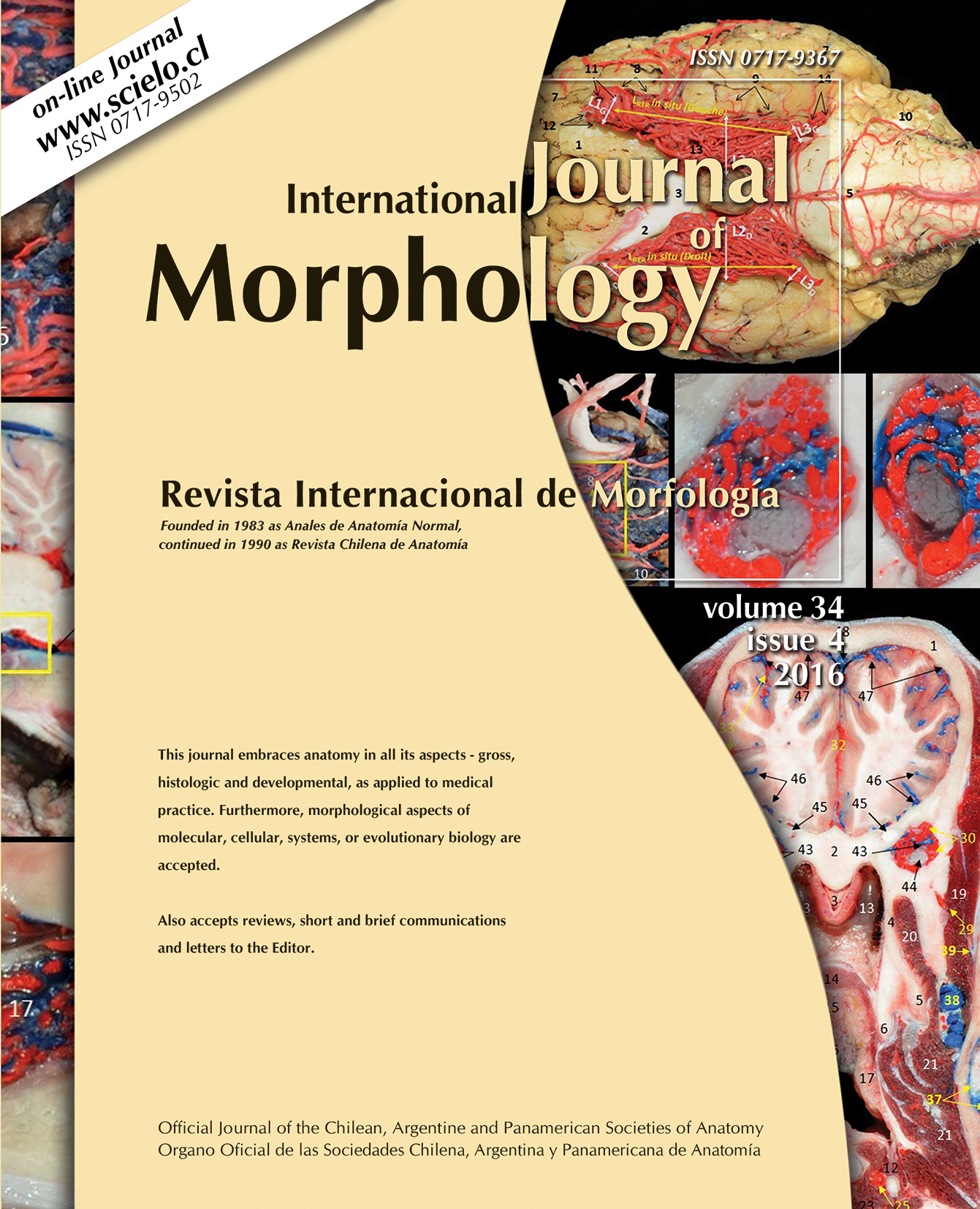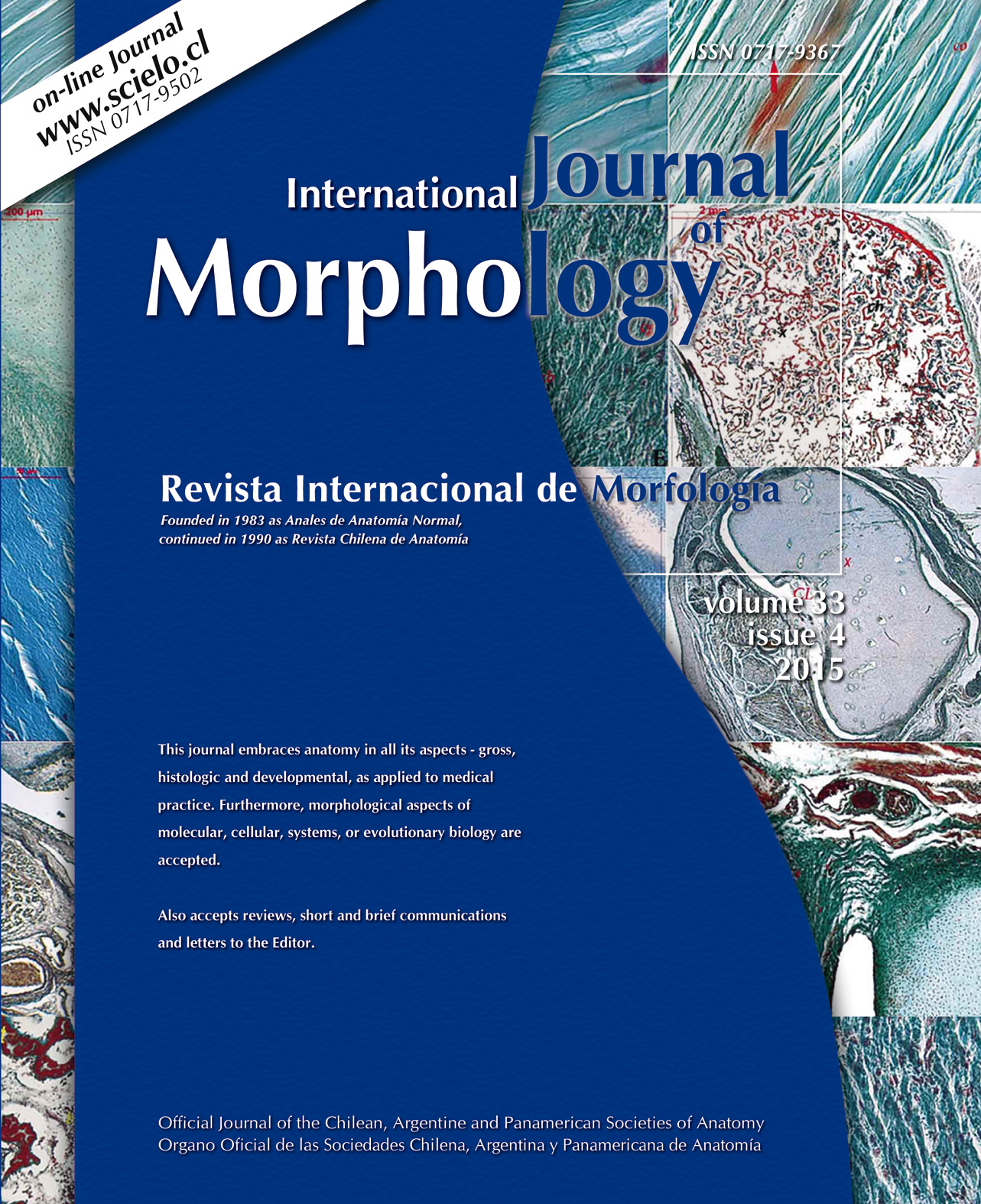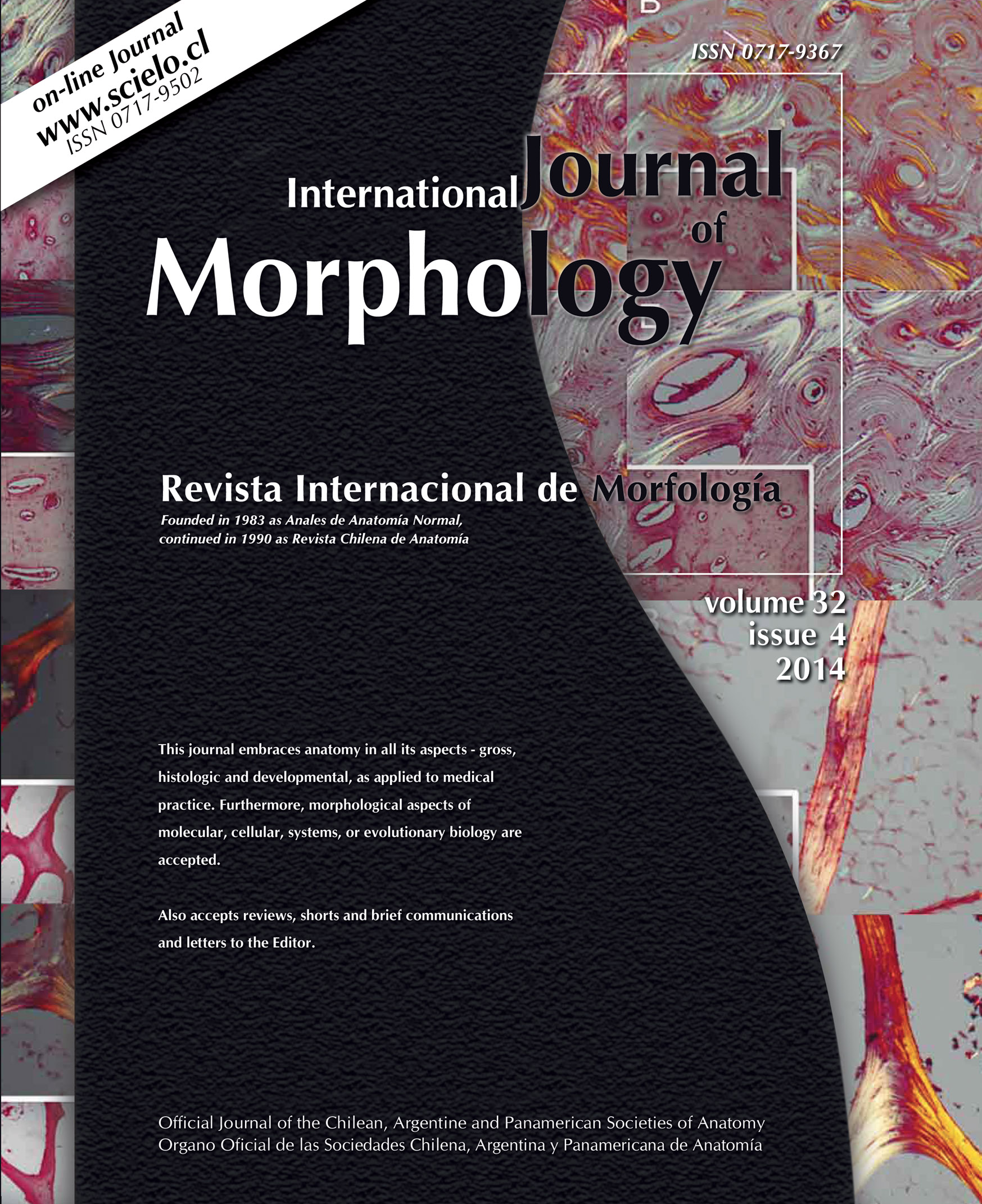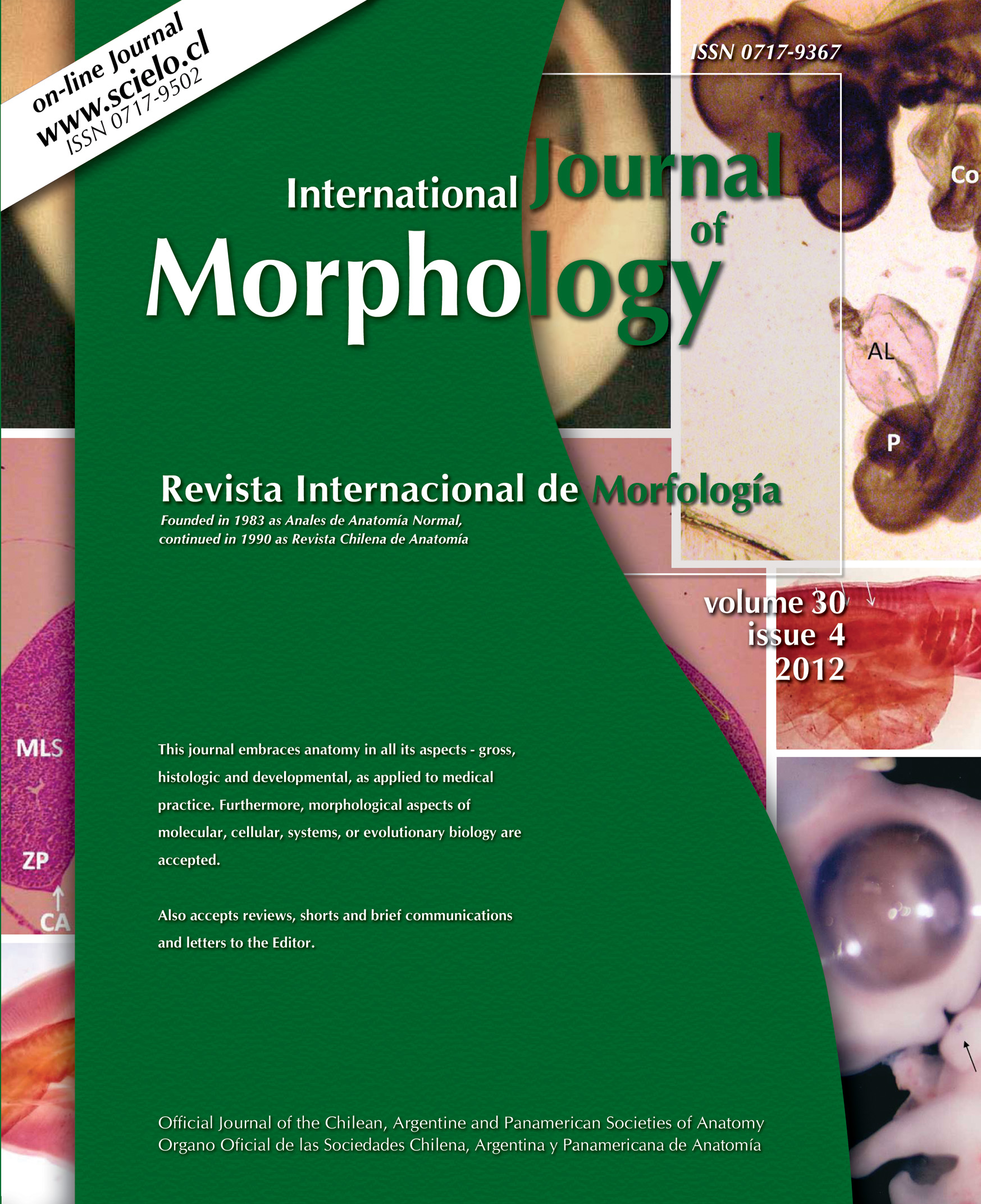Anatomical Features of Some Bones of the Forelimbs of Lions (Panthera leo)
DOI :
Md. Shahriar Hasan Sohel; Kh. Nurul Islam & Mohammad Lutfur Rahman
Summary
We studied the bones of forelimb of four adult lions (Panthera leo) of both sexes to record the gross anatomical and morphometrical features of the scapula, humerus, radius and ulna. We observed some unique anatomical features that will be helpful for radiographic interpretation and forensic investigations. The lateral surface of scapula was unequally divided into supraspinous (fossa supraspinata) and infraspinous fossa (fossa infraspinata) by a well developed spine (spina scapulae). The acromion process was subdivided into suprahamate process (processus suprahamatus)and hamate process (processus hamatus); the later one was over hanged the glenoid cavity (cavitas glenoidalis), but the supraglenoid tubercle (tuberculum supraglenoidalis) was absent. The shaft (diaphysis) of humerus was compressed craniocaudally in proximal part, rounded to oval in middle part and compressed mediolaterally in distal part. A long, narrow supracondyloid foramen was found at distal limb just above the medial epicondyle (epicondylus medialis) which didn’t connect the radial fossa (fossa radialis) with the olecranon fossa (fossa olecrani). The radius and ulna were twin bones where radius was articulated craniolateral to the ulna proximally and craniomedial to the ulna distally. However, the ulna was the longest bone in the forelimb of lion. The olecranon tuberosity of this bone had three prominences - two were cranially, whereas the caudal one was the largest and rounded. Distally projected styloid processes (processus styloideus) were found in the distal limb of both radius and ulna.
KEY WORDS: Lion; Anatomy; Scapula; Humerus; Radius; Ulna.
How to cite this article
SOEL, M. S. H.; ISLAM, K. N. & RAHMAN, M. L. Anatomical features of some bones of the forelimbs of lions (Panthera leo). Int. J. Morphol., 39(2):378-385, 2021.












